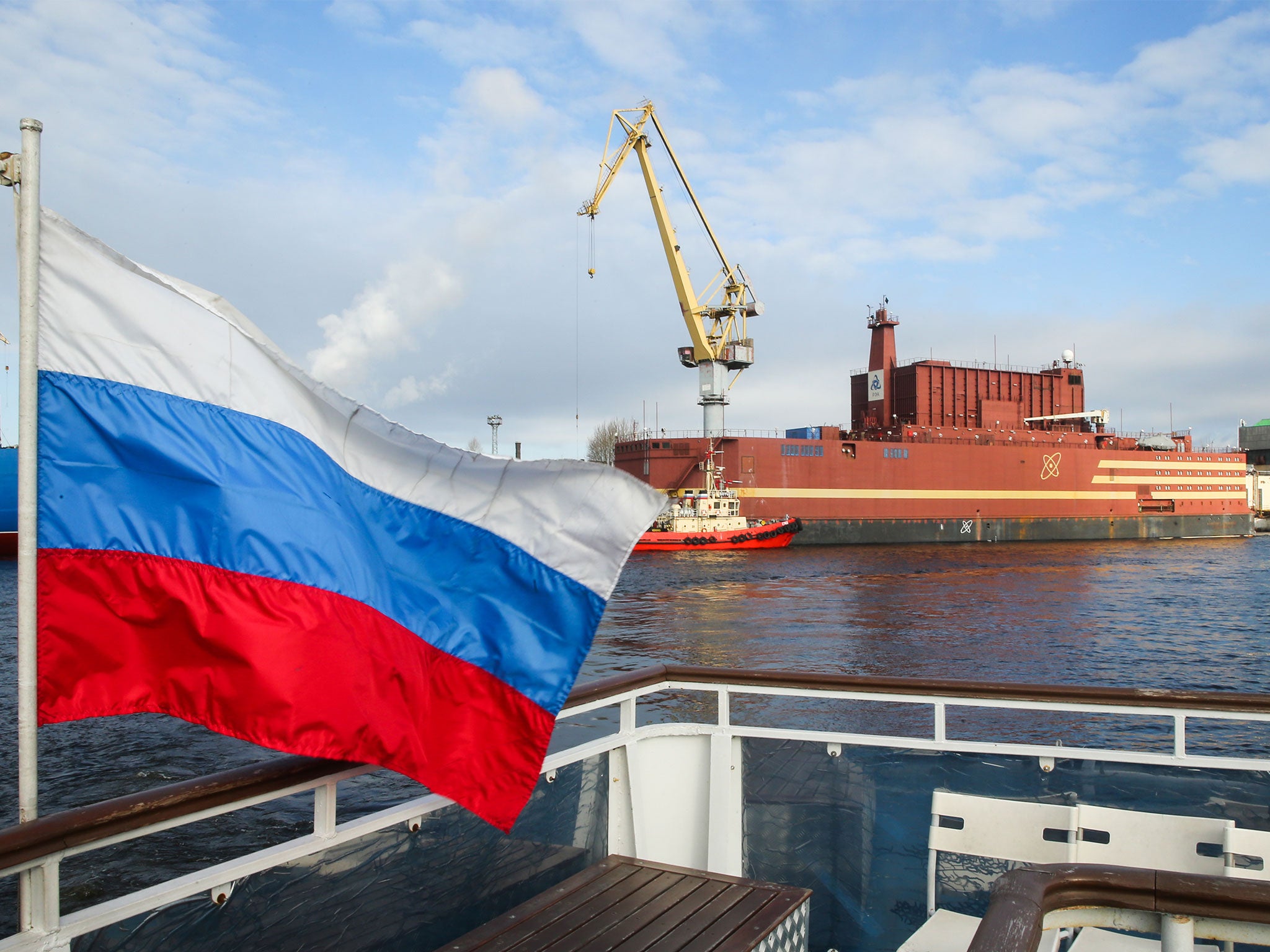Russia's floating power plant branded 'nuclear Titanic' sets sail on controversial first voyage
Akademik Lomonosov launches despite fears over potential for atomic disaster at sea
Your support helps us to tell the story
From reproductive rights to climate change to Big Tech, The Independent is on the ground when the story is developing. Whether it's investigating the financials of Elon Musk's pro-Trump PAC or producing our latest documentary, 'The A Word', which shines a light on the American women fighting for reproductive rights, we know how important it is to parse out the facts from the messaging.
At such a critical moment in US history, we need reporters on the ground. Your donation allows us to keep sending journalists to speak to both sides of the story.
The Independent is trusted by Americans across the entire political spectrum. And unlike many other quality news outlets, we choose not to lock Americans out of our reporting and analysis with paywalls. We believe quality journalism should be available to everyone, paid for by those who can afford it.
Your support makes all the difference.A controversial floating nuclear power plant built by Russia that environmentalist have dubbed a "nuclear Titanic" has set sail on its first sea voyage.
The plant, Akademik Lomonosov, was towed out of the St Petersburg shipyard where it was constructed on Saturday.
According to the Lomonosov’s owner, state-controlled nuclear energy firm Rosatom, the craft will be towed through the Baltic Sea to a base in Murmansk.
The floating plant will then be loaded with nuclear fuel before being towed to the Arctic port of Pevek in the summer of 2019, where it will be put into service.
Rosatom’s project has come under widespread criticism from environmental groups, including Greenpeace, which has branded it a "floating Chernobyl" and a "nuclear Titanic".
Greenpeace nuclear expert for central and Eastern Europe, Jan Haverkamp, said although initial plans to test the craft in St Petersburg had been scraped, the Lomonosov still posed a threat to the environment.
"To test a nuclear reactor in a densely populated area like the centre of St. Petersburg is irresponsible to say the least," he said.
"However, moving the testing of this ‘nuclear Titanic’ away from the public eye will not make it less so.

"Nuclear reactors bobbing around the Arctic Ocean will pose a shockingly obvious threat to a fragile environment which is already under enormous pressure from climate change.
"This hazardous venture is not just a threat to the Arctic, but, potentially, to other densely populated or vulnerable natural regions too."
The Lomonosov is designed to produce power in remote regions of Russia’s extreme north and far east.
Rosatom says the reactor is capable of generating enough power for a town of up to 100,000 people.
Construction of a second floating plant is expected to begin in 2019, with Russian state media reporting the crafts could also be marketed to other countries.
Officials in Scandinavian nations including Norway and Sweden have voiced concerns over the potential for an accident at sea involving the Lomonsov during its construction.
However, Rosatom insists precautions have been taken to prevent a nuclear disaster.
"[The Lomonosov] is designed with the great margin of safety that exceeds all possible threats and makes nuclear reactors invincible for tsunamis and other natural disasters," the company said in a statement.
"In addition, the nuclear processes at the floating power unit meet all requirements of the International Atomic Energy Agency (IAEA) and do not pose any threat to the environment."

Join our commenting forum
Join thought-provoking conversations, follow other Independent readers and see their replies
Comments